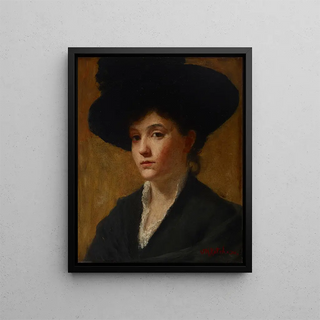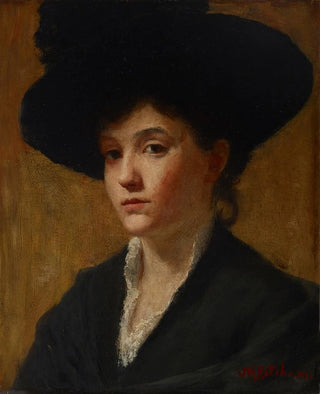Art print | Study of a hat - Susan Merrill Ketcham


View from behind

Frame (optional)
The artwork "Study of a Hat" by Susan Merrill Ketcham is an invitation to immerse oneself in a universe where elegance and simplicity meet. This piece, both delicate and evocative, captures the very essence of fashion and feminine identity at the turn of the 20th century. Through this study, the artist does not merely depict an accessory but evokes an entire atmosphere, a state of mind. The hat becomes a symbol of an era, a reflection of the aspirations and dreams of those who wear it. By admiring this work, the viewer is transported to a world where every detail matters, where each shade of color and texture tells a story.
Style and uniqueness of the work
Ketcham's style is distinguished by an approach that is both realistic and impressionistic. In "Study of a Hat," she manages to capture light in a way that lends unprecedented depth to her subject. The brushstrokes, both precise and fluid, create a sense of movement, as if the hat is about to come to life. The colors, carefully chosen, evoke a soft and harmonious palette, highlighting the delicate shapes of the hat while suggesting a warm ambiance. This work is not limited to a simple representation; it embodies a reflection on femininity, style, and artistic expression. Ketcham succeeds in establishing a dialogue between the viewer and the object, transforming a fashion accessory into a centerpiece of art.
The artist and her influence
Susan Merrill Ketcham, although less well-known than some of her contemporaries, has left a significant mark in the art world. Born at the end of the 19th century, she evolved within a rich artistic context where Impressionist and Post-Impressionist movements profoundly influenced creation. Ketcham was particularly attentive to the details of everyday life, capturing fleeting moments and ordinary objects with rare sensitivity. Her work has often been praised for its ability to combine technique and emotion, allowing the viewer to feel an intimate connection with the piece. By exploring themes such

Matte finish

View from behind

Frame (optional)
The artwork "Study of a Hat" by Susan Merrill Ketcham is an invitation to immerse oneself in a universe where elegance and simplicity meet. This piece, both delicate and evocative, captures the very essence of fashion and feminine identity at the turn of the 20th century. Through this study, the artist does not merely depict an accessory but evokes an entire atmosphere, a state of mind. The hat becomes a symbol of an era, a reflection of the aspirations and dreams of those who wear it. By admiring this work, the viewer is transported to a world where every detail matters, where each shade of color and texture tells a story.
Style and uniqueness of the work
Ketcham's style is distinguished by an approach that is both realistic and impressionistic. In "Study of a Hat," she manages to capture light in a way that lends unprecedented depth to her subject. The brushstrokes, both precise and fluid, create a sense of movement, as if the hat is about to come to life. The colors, carefully chosen, evoke a soft and harmonious palette, highlighting the delicate shapes of the hat while suggesting a warm ambiance. This work is not limited to a simple representation; it embodies a reflection on femininity, style, and artistic expression. Ketcham succeeds in establishing a dialogue between the viewer and the object, transforming a fashion accessory into a centerpiece of art.
The artist and her influence
Susan Merrill Ketcham, although less well-known than some of her contemporaries, has left a significant mark in the art world. Born at the end of the 19th century, she evolved within a rich artistic context where Impressionist and Post-Impressionist movements profoundly influenced creation. Ketcham was particularly attentive to the details of everyday life, capturing fleeting moments and ordinary objects with rare sensitivity. Her work has often been praised for its ability to combine technique and emotion, allowing the viewer to feel an intimate connection with the piece. By exploring themes such






